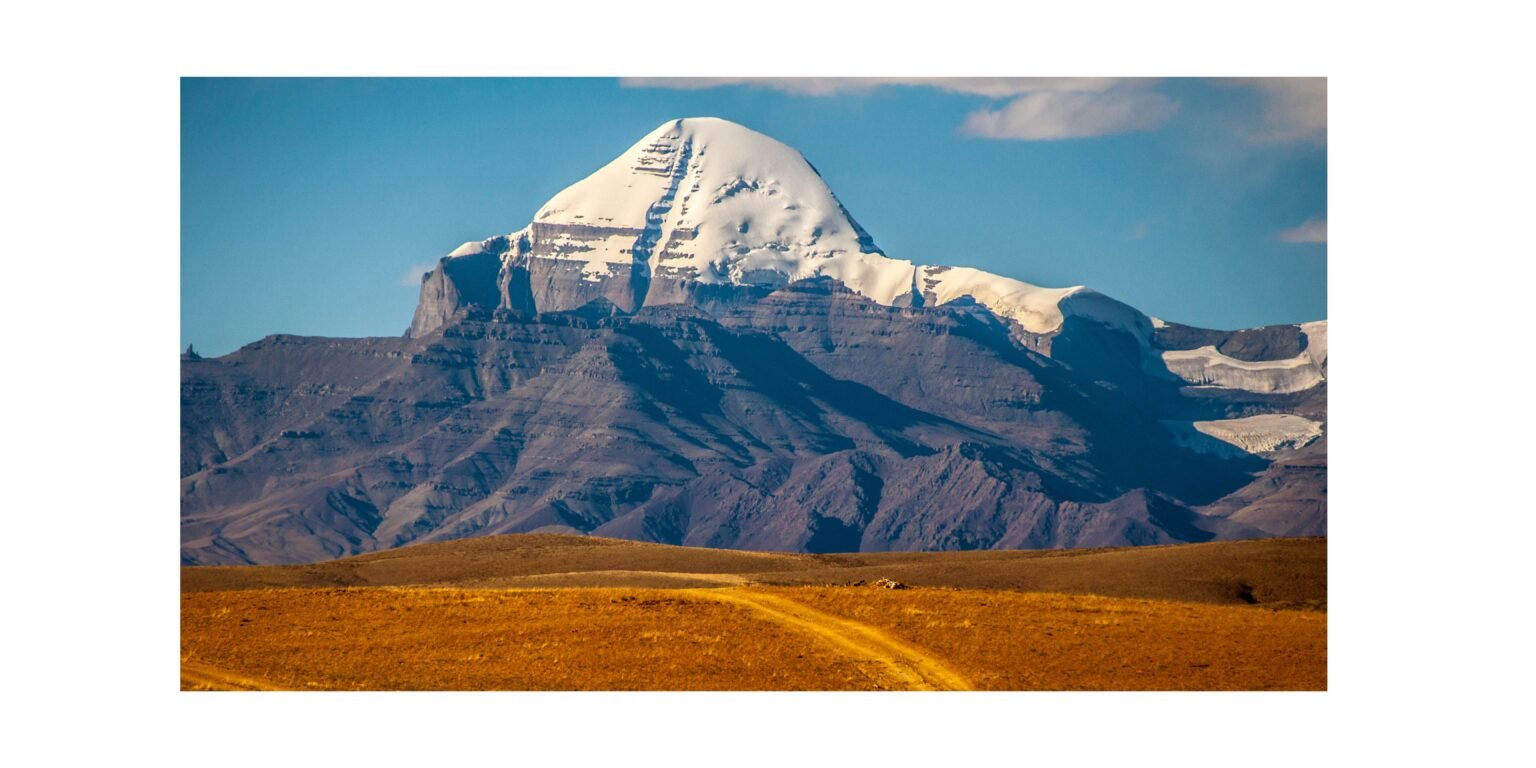Many saints, sages, devils, scholars, and pilgrims have traveled to the seductive Mount Kailash for millennia. But till today, nobody has succeeded in reaching the summit. Trekking to the area is organized by a number of pilgrimage travel providers as long as safety permits. The area is always frigid because of the bone-freezing cold. However, April to mid-June and September to mid-October are the best times of year to visit the Kailash Parvat. Since the weather is good and there isn’t any rain, which is the largest obstacle throughout the walk. To fully appreciate the secrets of God’s creation. One must at least once in their lifetime travel to the highly venerated Mount Kailash.
A Glimpse on The Details of Mount Kailash
Nestled in the Himalayan mountain range, Mount Kailash is a unique peak. It holds sacred importance for four main global faiths. With a towering 22,028 feet, it is one of the area’s tallest peaks. And a sight to behold for anyone with the courage to ascend it. In addition to being a hallowed location for Buddhism, Hinduism, Jainism, and Bon. It has long been a significant destination for pilgrims of all religions. People from all over the world have enthralled Mount Kailash because of its remarkable shape. Also because of enigmatic past, and potent spiritual influence.
Mount Kailash, also known as the ladder to heaven and the center of the earth. It is the sanctum sanctorum, the home of Lord Shiva. And the source of the Indus, Brahmaputra, Sutlej, and Karnali rivers. The extremely holy mountain is near the Indian border in the Kumaon area of southwest Tibet. It is the place where heaven and earth converge.
The scriptures said that if someone undertook a round walk their guilt is forgiven. The religions of the Hindus, Jains, and Tibetan Buddhists. And Bon people all sincerely acknowledge Kailash Parvat’s divinity. A lot of mystery surrounds the summit of the Kailash Ranges. Which is always covered in heavy silver clouds.
Height of Kailash
At 6,600 meters, it remains one of the world’s tallest unclimbed peaks. It is despite several attempts. In 1936, Austrian mountaineer Herbert Tichy determined to be the first person to ascend Mount Kailash. In 2001, a Spanish climbing team received permission from the Chinese authorities to complete the climb. The Himalayas are home to Mount Kailash, one of Asia’s holiest places. This place stands out from the rest since it is the only one that is not frequently visited by tourists. To work on the 108 circuits. However, a select few people have made it a point to visit each year in the hopes of finishing them. The Chinese are in charge of the Tibetan region in the Himalayas.
The Himalayas’ Sacred Heart
In a secluded area in Tibet, close to the boundaries of China, India, and Nepal, is Kailash Mountain. Although not the highest peak, standing at around 21,778 feet (6,638 meters), it is one of the most remarkable. In Hinduism, it is to be the place where Lord Shiva and his celestial companion, Parvati, reside.
For Buddhists, the center of the universe is the mythological Mt. Meru, also known as Kailash. In addition, Jainism honors Kailash as a hallowed location. Where its founder, Rishabhdev, attained enlightenment.
The Mountain Not Climbed
The fact that no one has ever ascended Kailash Parvat successfully is one of its greatest mysteries. The mountain’s steep and perilous slopes, also to its spiritual significance, have prevented many accomplished climbers. from reaching the summit. The sacred mountain is to be under the protection of divine forces. This makes any attempt to conquer it impossible.
This riddle raises questions about whether supernatural activity is taking place. Or if the mountain is simply too tough to ascend. In any case, it heightens one’s appreciation for the mountain.
The Massive Swastika
A massive swastika located on the southern side of Kailash Parvat is an odd symbol. That has baffled experts and tourists alike. An ancient emblem of good fortune, the swastika is significant in Buddhism. Also in Jainism, and Hinduism.
The mystery is in how it got there. Some believe that erosion and glaciers formed the natural pattern. Some people think it’s a man-made sign that dates back thousands of years. However, we are unaware of its origin or purpose.
Never-Melting Snow
One distinctive thing about Kailash Parvat is the snow, which never appears to melt. There are places of the mountain where the snow never goes away. despite the peak’s high elevation and harsh weather.
Scientists that research the ice and weather in the area are perplexed by this. Some believe it’s due of the distinctive features and high altitude of the mountain. Others believe that because of the mountain’s spiritual significance. It is a divine miracle.
The Enigma of the 108th Number
Hinduism regards the number 108 as sacred and highly significant. The mystery surrounding this number deepens when considering Kailash Parvat. The mountain’s circumference is estimated to reach 108 kilometers. As a sign of dedication, pilgrims frequently walk around the peak 108 times.
Scholars and spiritual seekers continue to debate the meaning of this number and its relationship to Kailash Parvat.
The Holy Rivers’ Origin
Several of Asia’s principal rivers. Such as the Indus, Sutlej, Brahmaputra, and Karnali, originate in Kailash Parvat.
The mystique lies in the belief that taking a bath in these rivers. Particularly the one near Kailash, will purify the soul and erase transgressions. For this rite, people come from various religious backgrounds to the area. The mountain’s allure is enhanced by the notion that these waters possess unique purifying qualities.
Conclusion
One of the most revered gods in Hinduism, Lord Shiva, resides at Kailash Parvat. They think he sits at the top of the mountain to contemplate. Whether Lord Shiva is a fiction or a genuine person is a mystery. While some consider it a question of faith. Others speculate that there may be more to it than what science can explain.

